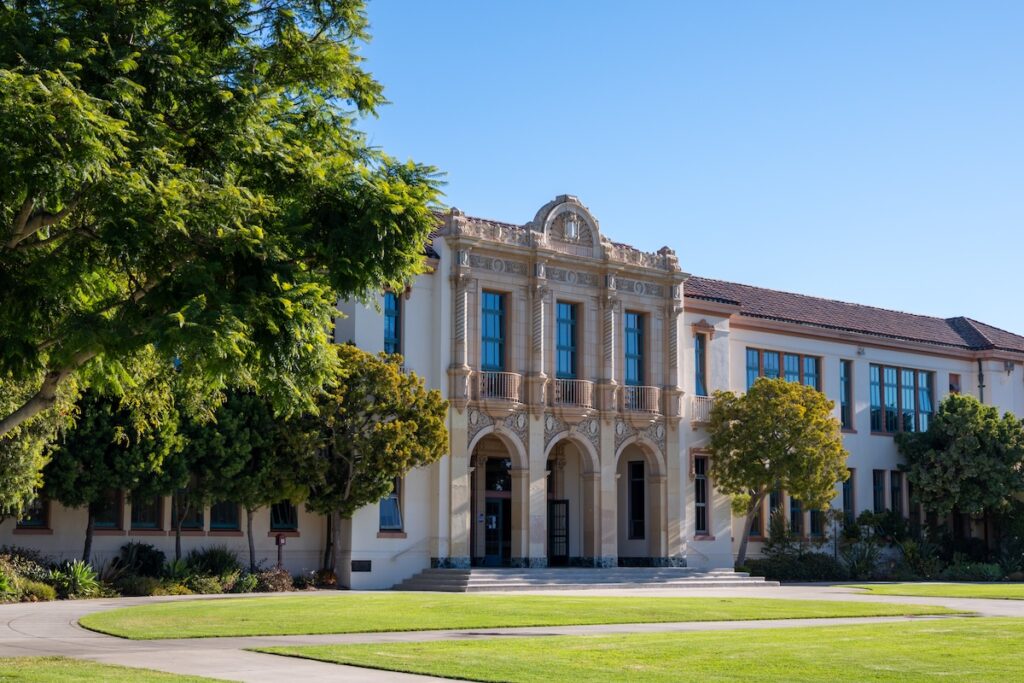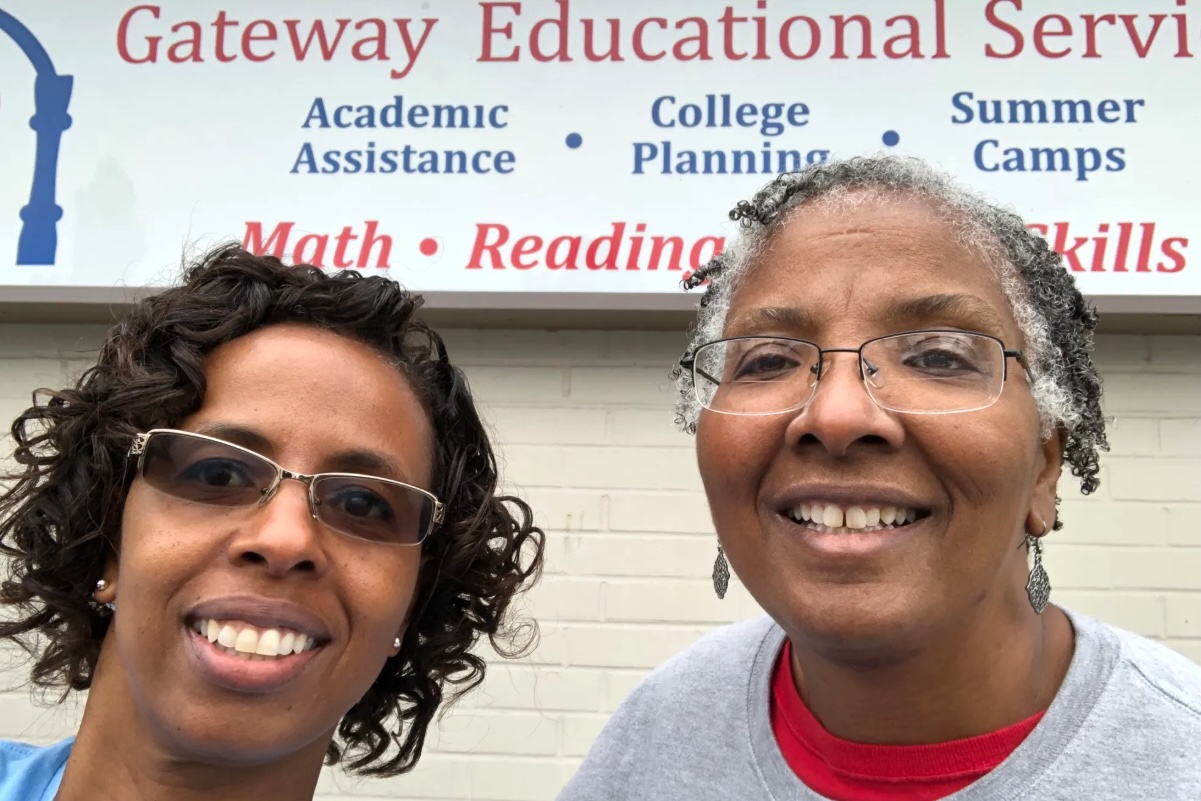This is the third in a three-part series about anti-Black bullying in Santa Barbara schools. Read Pt. 1 here and Pt. 2 here.
SANTA BARBARA, Calif. – Unlike some of the younger activists and advocates she works with, Connie Alexander, the president of the Santa Barbara NAACP, won’t say “allyship,” their preferred term. Instead, she uses the word “community.” A lot.
As Santa Barbara grapples with a history of anti-Black racist bullying in its public schools, Alexander is a leader among those working to strengthen the bonds of community in a city where they are under strain.
The word “community” came up over and over in talking with her and Audrey Gamble, co-founders of the non-profit Gateway Educational Services, which nurtures academic success for Santa Barbara students and their families.
How to sustain and grow Black “community” as people are scattered by untenable housing costs. How “community transforms conversations.” How the “community” of families hurt by racist bullying in Santa Barbara public schools need mechanisms for enduring transparency and accountability from the school district.
And then there’s the community of families and children receiving social and academic support through Gateway’s programs.
“We’re really looking at supporting foundational needs for reading, for math college readiness that focuses on first generation, underrepresented students,” explained Alexander, who has lived in Santa Barbara for decades. “We have everybody in the world at Gateway in the afternoon,” she continued. “We have Black students, we have Latino students, we have white students. Anybody in need comes in that door and that’s what we look like.”
Gateway is a haven and a hive – a place where kids feel seen and heard and loved, and where students of color learn academic skills and pride from people who look like them.
In addition to after school and summer programs, Gamble and Alexander established Obsidian Scholars to bring together Black fourth through seventh graders from throughout Santa Barbara County so they can experience something they can’t get at school: being in community with other Black learners.

“We have specifically started programs to support the needs of Black students because we’ve seen that they have needed more support academically and in the social emotional realm,” Alexander said.
In August, Gateway held a Black Youth Summit, which Alexander described as “just a day of joy” for kids from Santa Barbara, and nearby Lompoc and Santa Maria, towns with marginally larger Black populations. In October, Gateway sponsored a youth dialogue to bring together Black, Latino and white kids from grades 6 through 8.
“We are working with the Community Conflict and Resolution Unit from the California Department of Justice,” Alexander said. “They’re an amazing little group … that will come into communities and help you with establishing dialogues, help you with some of those big pieces of, how do we have these conversations?”
While she sees steps forward in the reforms the school district has launched, including the creation in November of a permanent committee specifically focused on the issue of anti-Black racism, Alexander recognizes that students have roles to play, too.
Because so many of the racism incident reports at SBUSD have been from the junior highs, the event included students already in junior high as well as those about to enter.
Students are constantly told how to behave and what to say in public, said Alexander. “We need to create spaces where they develop their leadership by talking to each other… to be in relationship with each other.”
For Santa Barbara’s Black students, those conversations might begin with the frequent use of the N-word on school campuses, and the challenges they experience over their racial identity in a city where they are in the extreme minority – less than 1% in the school district.
Bianca Duran’s two older children, ages 14 and 12, have often felt conflicted about being part Black while being recognized as only Black and bullied for it by other students. Duran credited Gateway and “Miss Connie and Miss Audrey” for giving her children something she couldn’t give them by herself: Black love and pride.
On a warm Thursday afternoon in July in a Santa Barbara ice cream shop, Duran, who is Mexican American, gazed lovingly up at the son and daughter who are already taller than she is. “We came up together. I was already a mom at 20 and 21.”
Duran’s youngest child, her “mini me,” turned two in August. As Duran talked to a reporter, her two older children entertained themselves and their little brother.
Duran, who works as a caregiver and a caterer, had just picked her 12-year-old from the last day of Gateway’s STEAM camp for girls. Smiling, she said Gateway has been her own “gateway” to giving her children something she realized she needed as much as they did.
“Gateway gave me the Black community I needed,” she said. “I felt alone because I’m raising two Black children, and I had no one to connect to as a mother.”
At the end of the school year, Duran’s family attended an event celebrating Black graduates. A Black mom whose daughter is the same age as Duran’s, offered to take the girls together to get their hair braided.
“Do you know what that means… braids is hours and has a friend for that time now.”
Over a Zoom conversation in April, Duran was almost in tears talking about what it has meant for her family to be welcomed by Black families. To hear her tell it, what Gateway has given them is a beloving community.
“Once you find a Black community, and you are in it, people love you and embrace you,” she said. “And sometimes, well, there’s always going to be haters. But for the most part, I have had an experience where, come as you are, we’re going to help you.”
At Gateway, her older children get to work with kind, cool and smart Black tutors and role models. “And my children, they’re starting to open up and realize, you know what? I do have a community. I do have a family. I do have these people that I can rely on and talk to when I need that.”
Having Black mothers to talk to about raising Black children has been a solace for Duran, too.
“We have so many differences where we can all feel alone and isolated. But if we can get just a little community, or even one person on campus that looks like you and get you know, some Black time, then that’s what you need. And that’s what we all need.”
Peter Schurmann contributed reporting to this story.
This resource is supported in whole or in part by funding provided by the State of California, administered by the California State Library in partnership with the California Department of Social Services and the California Commission on Asian and Pacific Islander American Affairs as part of the Stop the Hate program. To report a hate incident or hate crime and get support, go to CA vs Hate.




